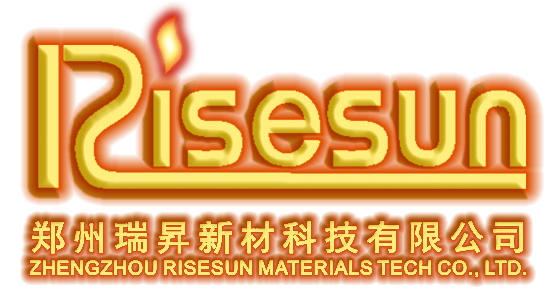28
2024
-
09
Unlocking the Advantages of Molybdenum Disilicide Heating Elements for Industrial Applications
Unlocking the Advantages of Molybdenum Disilicide Heating Elements for Industrial Applications Table of Contents 1. Introduction to Molybdenum Disilicide Heating Elements 2. What is Molybdenum Disilicide? 3. Benefits of Molybdenum Disilicide Heating Elements 4. Industrial Applications of Molybdenum Disilicide Heating Elements 5. Comparative Analysis: Molybdenum Disilicide vs.
Unlocking the Advantages of Molybdenum Disilicide Heating Elements for Industrial Applications
Table of Contents
- 1. Introduction to Molybdenum Disilicide Heating Elements
- 2. What is Molybdenum Disilicide?
- 3. Benefits of Molybdenum Disilicide Heating Elements
- 4. Industrial Applications of Molybdenum Disilicide Heating Elements
- 5. Comparative Analysis: Molybdenum Disilicide vs. Traditional Heating Elements
- 6. Installation and Maintenance of Molybdenum Disilicide Heating Elements
- 7. Future Trends in Heating Technology
- 8. Frequently Asked Questions
- 9. Conclusion
1. Introduction to Molybdenum Disilicide Heating Elements
Molybdenum disilicide (MoSi2) heating elements represent a groundbreaking advancement in the field of industrial heating technology. Known for their exceptional thermal stability and resistance to oxidation, these elements are increasingly utilized across various sectors. In this article, we will delve into the unique properties of molybdenum disilicide and highlight its numerous benefits for industrial applications.
2. What is Molybdenum Disilicide?
Molybdenum disilicide is a chemical compound composed of molybdenum and silicon. This binary compound crystallizes in a tetragonal structure, which contributes to its high melting point of approximately 2,250°C (4,062°F). Its unique thermal and mechanical properties make it an ideal candidate for high-temperature applications, especially in the heating element sector.
The Composition and Structure of Molybdenum Disilicide
Molybdenum disilicide consists of 2 moles of silicon combined with 1 mole of molybdenum, resulting in a stable and durable material. The bond between these elements imparts superior hardness and wear resistance. Furthermore, its structure allows for efficient thermal conductivity, which is critical in heating applications.
3. Benefits of Molybdenum Disilicide Heating Elements
Molybdenum disilicide heating elements offer a myriad of benefits that make them superior to traditional heating solutions. Key advantages include:
High-Temperature Performance
These heating elements can operate effectively at extremely high temperatures, making them suitable for processes that require consistent and reliable heat application.
Excellent Oxidation Resistance
Molybdenum disilicide exhibits outstanding resistance to oxidation. This property is particularly vital in high-temperature environments, where traditional materials may degrade rapidly.
Enhanced Thermal Efficiency
The thermal conductivity of molybdenum disilicide ensures that heat is uniformly distributed, minimizing thermal gradients and improving processing efficiency.
Long Operating Life
With their robust composition, molybdenum disilicide heating elements boast a longer operational lifespan compared to conventional heating elements, thereby reducing replacement costs and downtime.
Cost-Effectiveness
Although the initial investment in molybdenum disilicide heating elements may be higher, the long-term savings in maintenance and energy efficiency can significantly outweigh these costs.
4. Industrial Applications of Molybdenum Disilicide Heating Elements
Molybdenum disilicide heating elements are utilized in a variety of industrial sectors, including:
Ceramic and Glass Manufacturing
These elements are widely used in kilns and furnaces for firing ceramics and glass, where high temperatures are necessary for melting and shaping materials.
Metallurgical Processing
In the metallurgical industry, molybdenum disilicide is employed in applications such as sintering and heat treatment of metals, facilitating processes that require precise temperature control.
Semiconductor Fabrication
The semiconductor industry benefits from the use of molybdenum disilicide heating elements for processes like diffusion and oxidation, where consistent heating is critical.
Aerospace and Defense
Due to their exceptional temperature resistance, these heating elements are increasingly used in aerospace applications where reliability and performance are paramount.
5. Comparative Analysis: Molybdenum Disilicide vs. Traditional Heating Elements
To understand the distinct advantages of molybdenum disilicide heating elements, it’s essential to compare them with traditional heating solutions.
Material Durability
Traditional heating elements, often made from nickel-chromium alloys, tend to wear out quickly in high-temperature scenarios. In contrast, molybdenum disilicide maintains its integrity much longer, reducing replacement frequency.
Thermal Efficiency
Conventional heating elements frequently suffer from uneven heat distribution, which can lead to energy wastage and inefficient processes. Molybdenum disilicide, with its superior thermal conductivity, provides even heating, thus enhancing overall energy efficiency.
Operating Costs
While the upfront cost of molybdenum disilicide heating elements may be higher, the long-term savings from reduced energy bills, lower maintenance costs, and less frequent replacements make them a more economical choice.
6. Installation and Maintenance of Molybdenum Disilicide Heating Elements
Installation Guidelines
The installation of molybdenum disilicide heating elements requires careful consideration to optimize performance. It is essential to follow manufacturer specifications regarding placement and wiring to ensure maximum efficiency.
Maintenance Practices
Routine maintenance is crucial to prolonging the lifespan of heating elements. Regular inspections should be conducted to identify any signs of wear or damage. Furthermore, ensuring a clean operating environment will minimize oxidation and improve performance.
7. Future Trends in Heating Technology
As industries continue to evolve, so too do the technologies utilized in heating applications. The future of heating technology includes:
Increased Automation
The integration of smart technologies and automation allows for better control and monitoring of heating processes, improving efficiency and reducing energy consumption.
Innovation in Materials
Research is ongoing into advanced materials that can enhance the performance of heating elements. Molybdenum disilicide is at the forefront of these developments, with ongoing studies exploring its potential in various applications.
8. Frequently Asked Questions
What are molybdenum disilicide heating elements used for?
Molybdenum disilicide heating elements are primarily used in high-temperature industrial applications, including ceramics and glass manufacturing, metallurgical processing, and semiconductor fabrication.
How do molybdenum disilicide heating elements compare to other heating solutions?
They offer superior thermal efficiency, higher resistance to oxidation, and a longer lifespan compared to traditional heating elements like nickel-chromium alloys.
What is the operating temperature range of molybdenum disilicide heating elements?
These heating elements can operate at temperatures up to 1,800°C (3,272°F) without degrading, making them suitable for extreme conditions.
Are molybdenum disilicide heating elements cost-effective?
Although they may involve higher initial costs, their longevity and efficiency often lead to greater savings in the long run.
How can I ensure the longevity of molybdenum disilicide heating elements?
Regular maintenance, inspections, and ensuring a clean operational environment can significantly enhance their lifespan.
9. Conclusion
Molybdenum disilicide heating elements are revolutionizing industrial heating applications with their remarkable properties and benefits. From exceptional thermal performance to long operational life, they represent a forward-thinking solution for various industries. As technology continues to advance, embracing molybdenum disilicide as a heating solution will undoubtedly yield significant advantages in efficiency and cost-effectiveness. By investing in these innovative heating elements, industries can ensure they remain at the forefront of technological advancements while optimizing their heating processes for the future.



